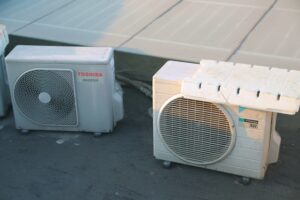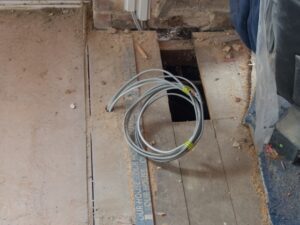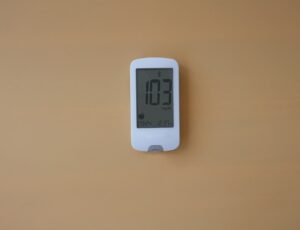Low well water pressure can be frustrating, but don’t worry—you’re not alone, and there are several practical ways to tackle the issue effectively.
One simple yet effective method to improve water pressure is to adjust the settings on your pressure tank. By tweaking the tank’s pressure settings to just under 2 psi of the pump’s cut-in pressure, you may notice a significant improvement in water flow at home. This quick fix can make a world of difference for your everyday activities.
If you’re looking for more powerful solutions, a pressure booster pump can provide a significant boost to the water pressure from your well. These pumps automatically adjust to incoming pressure, making sure that the pressure stays consistent, no matter how much water you’re using. Plus, they come with built-in safety features for your peace of mind.
For expert installation and guidance, Excel Mechanical is a trusted name in the HVAC and plumbing industry. Our team of professionals delivers exceptional quality service, tailoring solutions to meet both residential and commercial needs. Whether you need to enhance the water pressure in your home or business, our team ensures that you have the best system that suits your needs and budget.
In this blog, you will learn:
- Easy ways to improve your well water pressure
- How well systems work and factors affecting water pressure
- Professional solutions offered by Excel Mechanical to enhance your water system’s efficiency
Let’s break it down!
Understanding Water Pressure
Water pressure is a key factor in ensuring your well system operates efficiently.
Learn about the components that influence pressure to manage and potentially improve your well water performance.
What Is Water Pressure?
Water pressure refers to the force that pushes water through the pipes in your home. It’s measured in pounds per square inch (psi). Proper pressure levels ensure water flows efficiently from faucets and appliances.
A typical household water pressure ranges between 40 to 60 psi. If your water pressure is outside this range, you might experience issues like weak flow or even damage to your plumbing system.
Factors Affecting Well Water Pressure
Several factors can impact your well water pressure.
- Check the pressure tank. A faulty tank can cause low pressure.
- The condition of your well pump affects pressure. Old or malfunctioning pumps might not deliver adequate pressure.
- The size of your pipes can make a difference. Narrow pipes restrict flow, reducing pressure.
Other influences include mineral buildup in pipes, water demand, and elevation changes. Adjusting pressure settings to suit your system can involve checking valves or using booster pumps to increase efficiency and water flow.
Assessing Your Current System
To increase well water pressure, it’s vital to examine several system components.
This includes evaluating the well pump, checking the pressure tank, and inspecting the plumbing. Each part plays a critical role in maintaining proper water pressure.
Let’s dive in!
Evaluating the Well Pump
Start by examining your well pump.
A well pump is crucial because it provides the pressure to move water through your home. Check if the pump is appropriate for your water needs and household size.
Inspect the pump for any signs of wear or damage, such as cracks or leaks. If the pump seems to be malfunctioning, it might need replacing or repairs.
A pump that cycles too frequently or runs continuously can indicate pressure or water supply issues. Adjustments or upgrades can be necessary to ensure optimal performance.
Checking the Pressure Tank
The pressure tank helps maintain consistent water pressure.
Start by locating the pressure switch on the tank and using a gauge to check its current pressure level. Ensure that the pressure remains steady and falls within recommended levels, usually around 40 to 60 PSI.
A tank with pressure below this range might have an issue. Look for signs of leaks or a waterlogged tank. You can test by tapping the tank; a hollow sound indicates it’s functioning correctly, while a dull sound suggests issues.
Adjust the pressure switch if necessary.
For professional assistance, Excel Mechanical can help you ensure your pressure tank is functioning optimally, providing both great value and quality service.
Inspecting the Plumbing
Well-maintained plumbing is vital for good water pressure. Check your pipes for clogs, leaks, or corrosion since these can cause pressure loss. Look for visible signs of water damage, such as stains or puddles.
Faucets, washers, and other fixtures should be inspected as they may have blockages that reduce pressure. Clean or replace any faulty parts to improve water flow.
Inspecting fittings at joints is also wise, as flaws here can significantly impact pressure levels. Frequent inspection will help you catch problems early and maintain an efficient system.
Improving Well Water Pressure
Improving your well water pressure can significantly enhance daily activities like showering and washing dishes.
Key methods include adjusting the pressure switch, upgrading your well pump, and installing a constant pressure system. Each approach offers specific benefits and solutions, depending on your current system and specific needs.
Let’s explore them one by one!
Adjusting the Pressure Switch
One effective way to improve well water pressure is to adjust the pressure switch on your water system. Well systems typically maintain a pressure range, often between 40 and 60 psi. To ensure safety, start by turning off the power to your well pump.
Next, locate the pressure switch, usually found near your pressure tank. Adjust the settings using a wrench. Turning the nut clockwise will increase the pressure setting, allowing for a higher pressure range.
After adjustment, turn the power back on and test the system to ensure the desired pressure level is achieved. Make these adjustments gradually to avoid causing damage to the system.
Upgrading the Well Pump
Upgrading your well pump can effectively solve homes with persistent low-pressure issues.
Different types of pumps can provide varying levels of water pressure. Jet pumps and submersible pumps are common options that offer distinct benefits.
- Submersible pumps are usually more efficient and can push water from deeper wells.
- Jet pumps work well for shallow or moderate well depths.
Consider factors like the well depth and your household water needs when upgrading.
Consult with professionals if you’re unsure which pump best suits your system. A well-chosen upgrade enhances efficiency and ensures a steady, reliable water supply.
Installing a Constant Pressure System
Installing a constant-pressure system can effectively resolve fluctuating water pressure issues. This system uses a special pump controller to maintain consistent water pressure regardless of usage.
This technology automatically adjusts the pump speed when multiple water sources are used simultaneously, ensuring uniform pressure throughout your home. It works especially well in large homes where simultaneous water use is common.
A constant-pressure system significantly enhances comfort and convenience by maintaining regular pressure. Consult professional services to select and install the right model for your home, ensuring a solution tailored to your usage patterns and preferences.
Maintenance Tips
Proper maintenance of your well system can prevent water pressure issues and ensure a steady supply of water. Understanding how regular inspections and preventative measures can keep everything operating smoothly is crucial.
Here are some helpful tips:
Regular Check-Ups
Regular check-ups are essential to maintain your well water system.
You should aim to inspect your system at least once a year. This includes examining the well pump, pressure tank, and any visible pipes. Check for unusual noises or leaks, which can indicate a problem.
Having a professional handle these inspections can be beneficial. The experienced technicians can identify issues that might not be obvious to the untrained eye.
Regular inspections can help catch small problems before they become more prominent, costlier repairs.
Preventing Clogs and Blockages
Clogs and blockages can severely affect water pressure.
To prevent these, keep the area around the well clean and free from debris. Ensure that your water softener and house or tap filters are maintained regularly. Follow the manufacturer’s guidelines for cleaning or replacing filters to smooth water flow.
If you notice a drop in water pressure, test your water pipes by turning off all water-using appliances and running a cold tap to identify blockages.
Professional Support
Getting the right help for well water pressure issues can save time and prevent further problems. Experts can diagnose and fix issues quickly, ensuring your water system runs smoothly.
When to Call a Professional
Consider calling a professional if you notice persistent low water pressure despite trying basic troubleshooting methods.
Key signs include unexplained drops in pressure or unusual noises from the pump. Additionally, it might be time to involve a specialist if your pressure tank is over 15 years old.
Professionals have the tools and expertise to identify problems like damaged pressure tanks or failing pumps. By contacting experts, you can avoid potential damage to your system and ensure a long-lasting solution.
Rely on qualified technicians to assess and resolve issues efficiently.
Choosing a Qualified Technician
Selecting the right technician is crucial for addressing your water pressure problems effectively.
Look for technicians with proper certifications and experience in dealing with well systems. Check reviews and ask for recommendations to ensure you choose a reliable professional.
Our brand, Excel Mechanical, offers exceptional HVAC and plumbing services for both residential and commercial properties. We strive for outstanding quality and great value, tailoring solutions to meet your needs and budget.
Trusting experienced professionals like us ensures you receive the best possible system and peace of mind.
Frequently Asked Questions
When dealing with well water pressure, several common questions often arise. These include improving flow rates, adjusting pressure switches, and handling sudden drops in pressure. Let’s dive into some of these FAQs to give you clear and actionable answers.
How can I improve the flow rate of my well water system?
To enhance the flow rate, consider replacing parts of the system, like the pump or pipes. Ensure that pipes are appropriately sized and free from blockages. Installing a constant pressure system might help as it adjusts water pressure based on use.
What adjustments can be made to a well pressure switch to enhance water pressure?
You can increase water pressure by adjusting the well pressure switch, which controls the pump’s cutoff pressure. This involves turning adjustment nuts to raise both cut-in and cut-out pressures. For detailed guidance, refer to the pressure tank adjustment methods.
Why does my well water pressure drop and then return to normal?
Fluctuations in pressure can occur due to pump issues, such as inconsistent power supply or a worn-out pump. Additionally, sediment buildup in pipes can lead to temporary pressure drops. Regular maintenance of the well system can prevent these issues.
Can a pressure tank be used to boost well water pressure, and how?
A pressure tank stores water under pressure, helping to maintain stable pressure levels. Boosting water pressure by ensuring the tank is correctly sized and functioning well can help.
What steps can be taken to address a sudden loss of water pressure in a well system?
Sudden pressure drops might result from leaks, clogged filters, or failing pumps. First, inspect for leaks and clean any filters. If these steps don’t help, it may be time to consult with professionals. Excel Mechanical is committed to providing exceptional HVAC and plumbing services, ensuring top-notch solutions for pressure issues.
Is it possible to install a booster pump on my existing well system to increase water pressure?
Installing a booster pump can effectively increase water pressure. This pump works alongside your existing system to provide a more substantial flow. When considering this option, ensure compatibility with your current setup. Excel Mechanical offers high-quality service and tailors solutions to meet your unique needs and budget.




